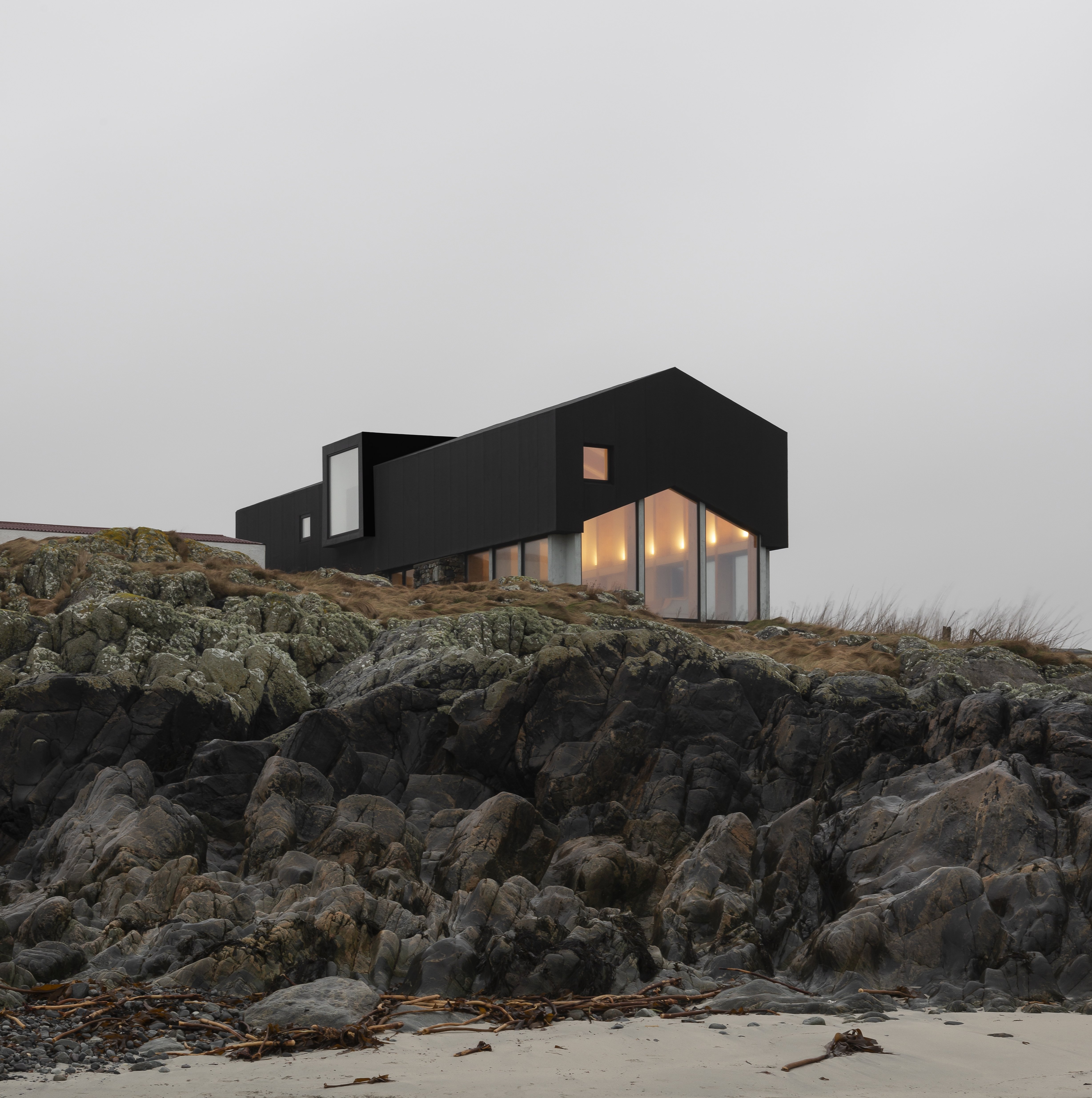
Sitting up on the rocks next to the sea, Taigh Na Traigh is the last house in the settlement of Mannal, on Tiree. It inhabits the remains of a byre, one of a cluster of agricultural ruins on the site. For the main living space, we copied the form of the original building in a bespoke tarred timber kit, lifted up, replaced with glass below and slid beyond the boundary wall to look out across the waves. In contrast, the bedroom wing next-door uses a material language local to Tiree: white harling with a red corrugated bitumen roof.

Denizen Works performs a welcome recalibration of our design compass in moving away from zinc and slatted softwoods as dominant materials with its intelligent take on context.
Gordon Murray, Architects’ Journal
Mannal House sits at the end of a small settlement, barely a hamlet, of similarly robust structures. Often these become half-buried in the machair. Denizen Works’ quasi-archaeological dig on House No.7 is a fine example of how weather-protected external spaces can be created while stimulating interesting spatial interchanges internally. Mannal House achieves something similar within the existing rubble walls of an old byre, which root the building to an otherwise fragile edge just above the shoreline, in some weather conditions even holding back the surf. The house is entered through this rubble structure, which forms an open but sheltered courtyard that shields then reveals the new building. Beyond, simply fenestrated cellular accommodation for guests and children in a low, single-storey white rendered box with a red corrugated metal roof in a low pitch catches the morning sun. Internally, the curved ceiling along its length suggests a re-used railway carriage. The feel is utilitarian and redolent of pre-war Ministry of Defence structures that still pepper Scotland’s rural landscape.
[A] consequence of living at this high latitude is the low angle of sunlight, even in midsummer. Bouncing off the surface of the sea, it creates a wonderful horizontal illuminance, in which gables are sometimes bathed in a distant sunlight while the remainder of the building is under a grey sky.
Denizen Works are gaining a strong credibility with their unique interpretation of climate and history, the drivers between the physics of topography and the metaphysics of place — the ley lines which define the underlying context of the settlement.
Gordon Murray, Architects’ Journal
CAPTIONS
Include ideas about:
Timber kit, made off site for speed and quality on site
Language of house suits Canadian clients – used to big areas of glass
Structurally insulated panels on a glulam frame
Part of plot divided from Georgian house next door
Open courtyard with windows framing view to lighthouse/cottages
Brief originally explained in series of excel spreadsheets
SIPS = structurally insulated panels
Glulam frame inside
EPHEMERA







